Research
Publications catalogue
The publications catalogue of the Department collects the information from ARCA [ITA], the institutional open-access archive of Ca’ Foscari scientific production.
It is also accessible from cerCa, the Ca’ Foscari bibliographic platform.
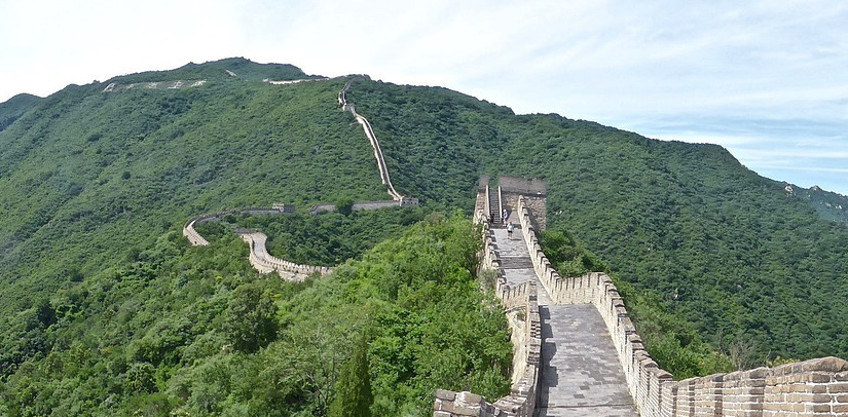
Department of excellence
Scientific research has a relevant and tangible impact on society, fostering knowledge, development, and innovation. Find out more about our Department's activities, projects, and achievements.
Working in research
PhD Degree is the highest level of academic education. It is a limited admission degree programme and lasts for at least three years. It allows graduates to develop methods and skills to pursue highly qualified research.
Short-term research fellowships allow Master’s Degree graduates to pursue short-term research (less than 12 months normally) including them in existing projects and research groups.
Research grants allow Master’s Degree graduates and PhDs to pursue research activities at the university or in the projects offered to the candidates.
Discover all the other opportunities of international recruitment at Ca’ Foscari: our University is highly committed in achieving excellence in research, developing international partnerships and funding new talents.
Research areas
The Department of Asian and North African Studies presents many inputs and lines of research thanks to the wide interests covered by its faculty members. Many geographical and linguistic areas are represented as well as many different fields: linguistic, philology, literature, history, sociology, arts, performances…
This feature creates a stimulating environment, facilitates a multidisciplinary approach to research and offers support to the most diverse research prospects.
Research labs and groups
CEM - Center for Studies on Contemporary Middle East
The Center for Studies on Contemporary Middle East (CEM) promotes and provides an incentive for research and studies on the Greater Middle East from the 19th to the 21st century with an emphasis on current events.
Covering the area from Morocco to Pakistan, it deals with the various characteristics of the countries and cultural areas of the region (history, politics, institutions, religions, society, literature, visual arts, communication instruments for modernity…) associating linguistic and historical and cultural skills with methodologies associated with the different disciplinary approaches.
In particular the CEM facilitates the dissemination of research and teaching on contemporary Greater Middle East through publications, conferences, symposia, seminars, exhibitions and collaborations with research institutes and national and international institutions.
Japan-related antique materials in Venice
The database uploaded on this page is an online catalogue of the Japan-related or Japanese antique documental materials preserved by the Biblioteca Nazionale Marciana of Venice. The database includes, for each book, a bibliographic description and a content description.
Japanese language E-learning
The Department of Asian and North African Studies has been carrying out for some years a project for IT instruments development and facilitating learning Japanese language, thanks to the support of many sponsors and the work of a large research group.
The project follows several steps which are important to the history of the Department and shows its attention to innovation and creativity and its perception of the future. The project has generated:
BunpoHyDict: a hypermedia dictionary of Japanese grammar, with alphabetically organized voices that are structured with links and contextualised in daily situations.
Itadict: it allows users to conduct terminology related research in Japanese language with the Japanese alphabets (kana and kanji) as well as the Latin alphabet (romaji).
Edukanji: an app for the organization and the management of Kanji teaching which allows users to visualize animations that show how to write individual letters and information on each kanji following a specific organization of teaching.
Jalea: a web app that allows users to obtain a strong command of written and spoken Japanese language.
Lab on Language-based Area Studies for sustainability Transformations (LabLAST)
LAST cultivates innovative research for sustainability, leveraging the potential of the area studies to generate knowledge attentive to context, ethically aware, and open to cross-fertilization across disciplines. It is composed of two clusters, one focusing on ecolinguistics, and the other on political ecologies of Asia and Africa.
Laboratorio on the Translation of Asian and North African Languages
The Laboratorio on the Translation of Asian and North African Languages was founded in 2008; it gathers researchers and translators who work on the main issues related to a number of non-European (and Euro-Asian) languages and cultures, and on the relationship between the latter and our own culture in the contemporary world, as well as in history. Our research is not only focused on what languages transmit – culture, texts, authors – but also on the ways in which all these elements are conveyed from one language to another, in an attempt to shed light on the often asymmetrical nature of cultural interplay.
The Laboratorio regularly organises conferences, lectures, and debates on translation, from both a theoretical and a practical perspective; it supports publications in the field of TS and promotes translations, through the new-born Ca’ Foscari Editions series Translating Wor(l)ds.
The Laboratorio also holds meetings with writers, publishers, and translators, and aims at exploring the cultural and social interaction at play in the practice of translation at all levels, proposing new threads of research and reflection, and providing a repertoire of information, knowledge, and experiences.
MaP - Marco Polo Centre for Global Europe-Asia Connections
The MaP Centre's mission is to foster collaborative scientific research and networking for the study of cultural, social, political, economic, and religious interactions across Europe, the Mediterranean region, and Asia.
It aims at developing international scientific cooperation on topics such as new religious identities, social and political institutions, and the history of relations in an innovative, transcultural perspective.
The scope of MaP’s activities covers also cross-cutting issues such as migration and climate change.
Recent Publications

Microcosmografie. Mīrzā Bīdil e la natura nel Seicento indo-persiano
Stefano Pellò
This book is the first extensive study of Mīrzā ‘Abd al-Qādir Bīdil's philosophy of nature. A pivotal figure of Indo-Persian literary culture, Bīdil (Patna 1644-Delhi 1720) articulates, both in his poetry and prose, a complex and original phenomenology of the physical world, using poetic imagination as a sharp philosophical tool. Focusing especially on his "naturalistic" masterpiece, the long poem Tūr-i ma'rifat or "Sinai of knowledge", his deconstructive, anti-identitarian autobiography (the Chahār 'unsur or "The four elements"), and the luxuriant analogical ocean of his ghazals, Bīdil's philosophia naturalis is scrutinized in a connected and transductional perspective. Against the background of what Jonardon Ganeri has defined the "philosophical globalisation" of the 17th century, the book addresses Sufi cosmologies as well as Sadrian existentialism, Mughal vedānta as well as Persianate Vaishnavism, etc., pointing to a deep net of connections and echoings. Most notably, Microcosmografie traces some hitherto unexplored lines of contact, and conceptual common grounds, with some revolutionary Italian early modern thinkers, following the travels of Giordano Bruno’s and Tommaso Campanella’s ideas to the Safavid-Mughal intellectual koine.

Studies in Vietnamese Historical Linguistics: Southeast and East Asian Contexts
Editors: Trang Phan, Tuan-Cuong Nguyen, Masaaki Shimizu
We are pleased to announce the release of a new book co-edited by Prof. Trang Phan (Department of Asian and North African Studies, Ca' Foscari University of Venice), published by Springer. This book represents a novel and pioneering contribution to the field of historical Vietnamese linguistics, marking the first of its kind to facilitate an interdisciplinary dialogue among linguists and philologists regarding language change in Vietnam, East Asia, and Southeast Asia.
With a focus on five major language families (Austroasiatic, Tai-Kadai, Sino-Tibetan, Austronesian, and Hmong-Mien), the book explores the interplay between structural and socio-cultural components in language evolution. Divided into two sections, it delves into the historical development of Vietnamese and its regional neighbors while also examining broader transformations in other East and Southeast Asian languages. This scholarly work solidifies its importance as a groundbreaking resource for linguists, historians, and cultural scholars.
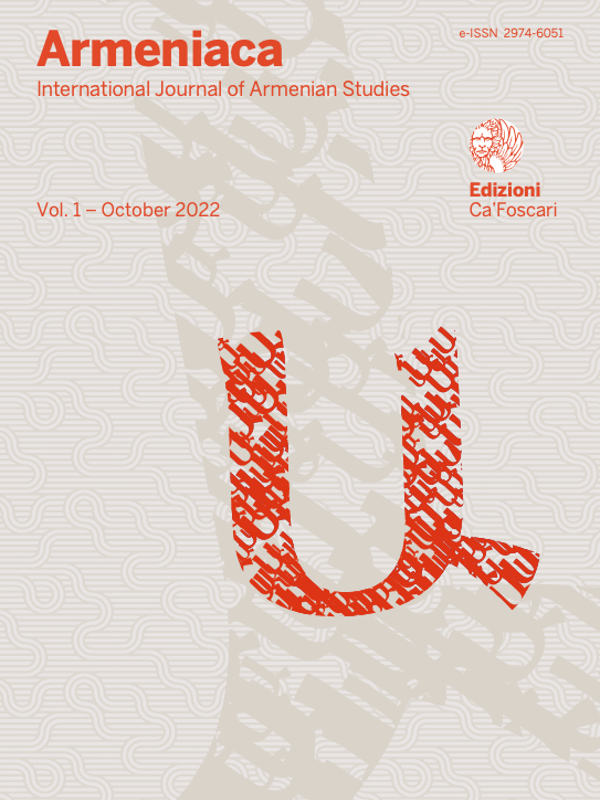
Armeniaca - International Journal of Armenian Studies
Editors-in-chief: Aldo Ferrari, Alessandro Orengo, Zaroui Pogossian, Anna Sirinian
We are pleased to announce the launch of a new online journal "Armeniaca. International Journal of Armenian Studies" to be published by Edizioni Ca’ Foscari. This initiative responds to the ever-growing diffusion of electronic journals in academia and the need to provide such a scholarly instrument also for Armenian studies: an open access outlet that follows a double-blind peer review procedure. Based on this shared goal representatives of four Italian universities where Armenian studies are currently present in the curriculum (Bologna, Florence, Pisa and Venice), came together to carry out this project. The journal embraces an international perspective as reflected in the composition of its scientific board whose members are Armenologists from diverse research institutions and universities in Europe and beyond. It is open to the main fields of research in Armenian studies (archaeology, art, philology, literature, linguistics, history) and accepts articles in English, Italian, French, and German.
Research projects
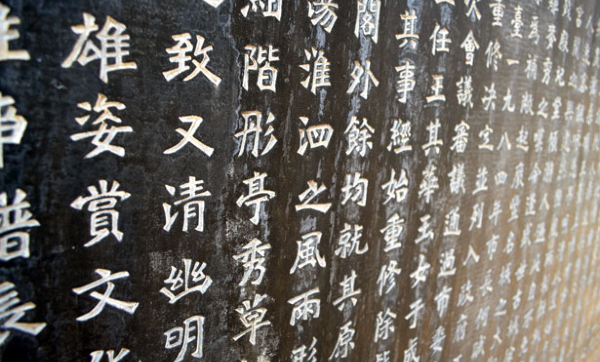
ACHIEVE - The acquisition of Chinese resultative verbal complexes by L1 Italian learners: combining learner corpus and experimental data
Supervisor: Bianca Basciano, Grant: € 247.322,00, PRIN 2020 n. 20209M3Z77, Duration: 36 months (01/06/2022 - 31/05/2025), Key words: Second language acquisition, learner corpora, Chinese, resultatives
The aim of this project is to investigate the acquisition of Chinese resultative verb complexes (RVCs, i.e. resultative compounds, phase resultative compounds, and directional complex verbs) by L1 Italian learners.
RVCs pose a challenge for L1 Italian learners of L2/LF Chinese due to their complexity (both from the morpho-syntactic and the semantic point of view) and the typological distance between Italian and Chinese in expressing this kind of events. For Italian learners of Chinese, acquiring structures which are either absent or very distant from those in their L1, as Chinese RVCs, is especially challenging.
We will adopt a mixed-method triangulated approach consisting in the combination and analysis of corpus data (to analyze learner performance) and experimental data (to investigate learner competence), in order to provide different insights into the phenomenon under study. This approach will also lead to obtaining data as authentic as possible, thus strengthening the validity of the results and the interpretation of the data.
After a thorough review of the literature on the topic and a preliminary analysis of the treatment of RVCs in teaching materials, we will collect written and oral data from L1 Italian learners of Chinese, divided by proficiency levels, enrolled at the two institutions involved in the project. In addition, we will also collect data from L1 Chinese speakers, acting as a control group, for comparative purposes.
One of the main results of the project will be the compilation of a learner corpus collecting both written and oral data of L1 Italian learners of Chinese, which will be freely accessible online and will prove to be a valuable resource for anyone who needs a sample of data to investigate the acquisition of Chinese by L1 Italian learners. After the compilation of the corpus, corpus and experimental data will be analyzed and interpreted: we will identify the acquisitional path of different RVCs followed by L1 Italian learners of Chinese and formulate generalizations, both at the descriptive and at the theoretical level. The study also has significant pedagogical implications, as it lays the basis for the development of pedagogical tools and methods that more accurately target the needs of Italian learners of Chinese.
Website: ACHIEVE
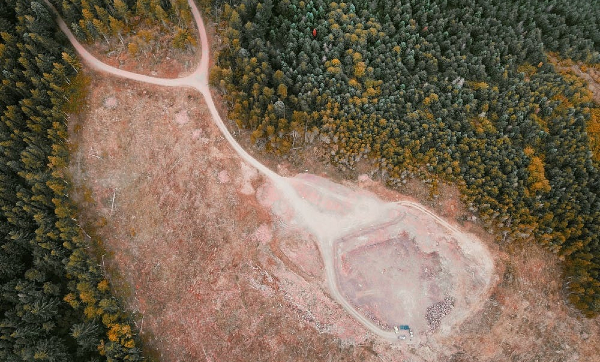
CHINGREEN - On the financialization of green: Chinese operations along the Belt and Road Initiative (BRI)
Supervisor: Daniele Brombal and James D Sidaway, Researcher: Giulia Dal Maso, Grant: € 267,282.24, H2020-MSCA-GF-2020, Duration: 36 months (01/11/2021 - 31/10/2024), Key words: Financialization, Green Finance, China, Belt and Road Initiative, Infrastructures.
The project explores how the rise of Chinese green finance along the Belt and Road Initiative (BRI) is (re)shaping global sustainable financial practices and thus the relationship between nature and finance.
Since Xi Jinping’s call for a new ecological civilization (shengtai wenming), China’s financial system has sought green routes.
The issuance of green bonds and the adoption of green financial securitization for funding green infrastructures are among the main tools China has adopted in its global extraversion through Belt & Road Initiative (BRI). It is now clear that the extent of Chinese-led green credit along the BRI will have a make-or-break role in meeting the Paris agreement’ global emissions targets.
To face this challenge, attention to the so far under investigated processes of standardization and harmonization of green financial instruments beyond China’s borders is increasingly urgent. Whilst a common “green” language is yet to be established, the way financial products are labelled and valued as “green” also remains contingent and unclear.
The overall rationale of this research is to advance the current understanding of the “financialization of nature” in its global and spatial variety.
To date, while green finance is indistinctly invoked as a solution and fix to the double crisis of the environment and capitalism, little specificity is given on how the duality green and finance is deployed and assembled by different forms of capital, public and private institutions and local actors along the BRI.
Website: CHINGREEN

IL and Korea - From European International Law to Asian One: Korean Experience, 1880s-1940s
Supervisor: Jong Chol An, Grant: € 43.600, SPIN 2021, Duration: 24 months (01/11/2021 - 31/10/2023), Key words: International law, Korea, Russo-Japanese War, Korean War, Hague Conference (1899, 1907)
Korea has actively participated in the so-called International Society, particularly since World War II. For example, the Republic of Korea together with Israel was born with the resolution of the United Nations in 1948. When North Korea invaded South Korea in June 1950, the United Nations dispatched the UN army to Korea, an army that was composed of 16 countries. However, due to the Cold War competition, South Korea and North Korea were not formal members of the UN by 1991. But now Korea voluntarily sent UN peacekeeping missions to several places in the world. Thus, it is not rare to see some Koreans, including former Secretary-General Ban Ki-Moon, actively working in international organizations, showing that Korea is an integral part of international society. Because international organizations are carriers of international law, international law is widely accepted all over the world.
Since current international law was a creature of European nation-state systems back in the 16th century, the European world order was expanded all over the world. The world was carved by international law, sometimes in a form of sovereign states or colonies in the late 19th and early 20th centuries. Korea became a Japanese protectorate in 1905 and its colony in 1910 so the traditional world order or the Chinese World Order was totally shattered. Thus, scholars have not paid attention to the Asian understanding of international law. When they focus on Asia, they tend to focus on primarily China and Japan. Korea became an independent state in 1948, and formally became a member of the International Society at last in 1948, an order that was related to the liberal world order, a Kantian one. However, historical understanding of international law in Korea is important to understand not only how Korea became a part of international law but also how knowledge about Korea’s pre-1948 era has an impact on even European world order or international law, particularly related to wartime practice. Thus, I believe that this project contributes to a new understanding of international law by looking at the Korean case.
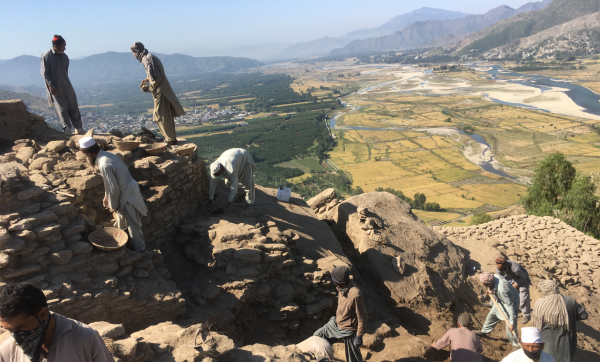
LASER CHIP - Late Antique Swat Ecology and Resilience: Climate and Habitat in Interfacial Periods
Supervisor: Luca Maria Olivieri, Grant: € 33.000, SPIN 2021, Duration: 24 months (01/11/2021 - 31/10/2023), Key words: LALIA, Buddhism, Swat, resilience, agriculture, climate changes
The LASER CHIP project is a multidisciplinary pilot study focusing on the Late Antique period of the NW South Asia and the Hindukush-Karakoram piedmont. The study area is the Swat Valley in Pakistan, which lies at the crossroads of three major climatic and cultural zones: NW South Asia, the Himalayas, and Central Asia. The project aims to investigate the forms of the late agrarian crisis as well as the decline and resilience of religious communities, important macro-phenomena revealed in Swat and surrounding region by unequivocal archaeological data and textual sources. The agrarian collapse recorded in Buddhist sources between 550 and 660 AD can be linked to the global sudden climate crisis (LALIA hypothesis). The project aims to acquire concrete data from direct sampling in soils and other fields, with a focus on the chronology of the first millennium BCE - first millennium CE. Study of new data at the botanical and molecular level will make it possible to assess climate fluctuations throughout the first millennium BCE.
The project will test whether the LALIA climate hypothesis, which covers the entire Eurasian shelf, can explain at the microclimatic level the crisis of agro-production, the decline of Buddhism and the resilience of the feudal system associated with Brahmanical communities. As outcomes of this project, we expect to obtain a better understanding of the role of past climatic variability in the Hindukush-Karakoram history, as well as to propose a new integrated model to explain the phases of the late antique crisis and the related human response.
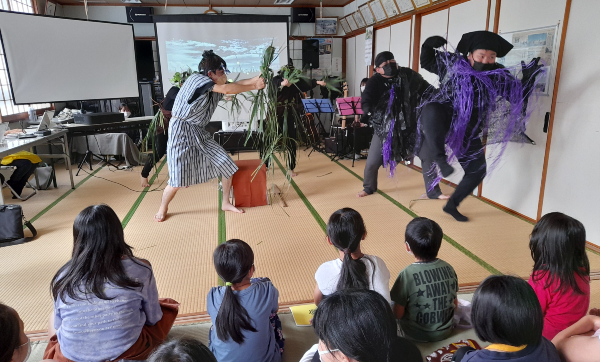
LESWE - Language Endangerment and Subjective Wellbeing
Supervisor: Patrick Heinrich, Grant: € 34.700, SPIN 2021, Duration: 24 months (01/11/2021 - 31/10/2023), Key words: endangered languages, sociocultural displacement, subjective wellbeing, happiness
Indigenous languages are more important for their speakers and society than has been previously thought. Most countries have established monolingual language regimes to create a sense of unity among their linguistically diverse population. Japan is a prototypical example. The effect is that indigenous languages – in Japan Ainu and Ryukyuan – have become endangered. We understand today that monolingual language regimes are problematic. Pilot studies among Aborigines in Canada and Australia show that linguistic assimilation that leaves no place for indigenous languages coincide with higher-than average mental and physical problems (e.g. depression, obesity). These findings prompt the following research question: To what extent does the language people know and speak affect their mental and physical wellbeing? To answer this question, this project studies language and wellbeing comparatively in three endangered language communities in the Ryukyus. The Ryukyus provide for a first compelling case as they are in themselves diverse, but the approach proposed here is replicable to all modern societies. This project adds a new perspective in the study of multilingualism that has implications for minority language education policies and for language maintenance and revitalization practices.
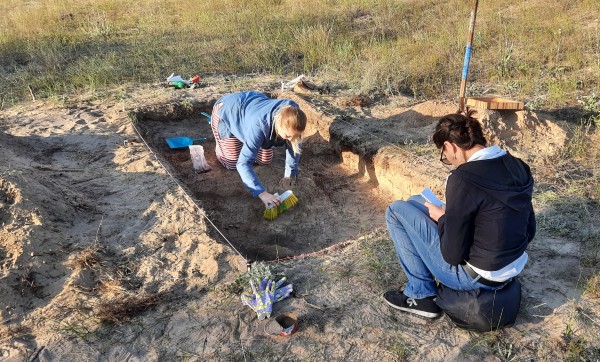
FuzzFarm - Modelling of the early agricultural spread in south of the Eastern Europe
Supervisor: Paolo Biagi, Grant: €183,473.28, European Union’s Horizon 2020 / Marie Skłodowska-Curie grant agreement No. 891737, Duration: 24 months (15/03/2021-14/03/2023), Key words: Neolithic, agriculture, paleosoils, agent-based models; paleoclimatology
The project aims at the reconstruction of the prehistoric land exploitation. Early farmers faced various ecological, economic and social constraints to select a certain micro-region for settling. These conditions will be studied in the course of the project by means of database approach for the whole south of Eastern Europe (roughly modern south-eastern Poland, Ukraine, Moldova, and eastern Romania); taking additional samples for research on palaeo-soils in the three focus microregions which evidenced several waves of early agricultural colonization. The criteria will be formulated for a site selection by Neolithic farmers. They will be incorporated into an agent-based model called "Fuzzy Farmers" using a fuzzy sets approach to combine the criteria of various character in a single model (for example, type of soil needed and a need of a similar site in geographic proximity for exchange of marital partners etc.). Agents will be represented by communities of early agriculturalists. The model will simulate the process of early agricultural expansion in a defined geographic space (modelled in GIS). I plan to seek the conditions of ceasing the expansion pace and in such a way try to explain the frontiers of early farmers' spread known from the archeological record of south-eastern Europe.
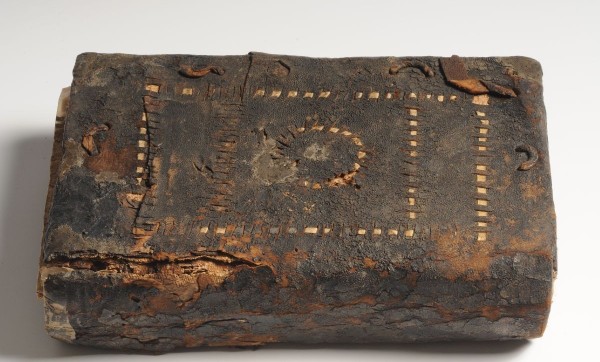
Early Jewish and Christian Magical Traditions in Comparison and Contact (EJCM)
Supervisor: Joseph E. Sanzo, Length: 5 years (01/02/2020 - 31/01/2025), Grant: €1.311.355,00 (European Research Council, Starting Grant Project 851466 – EJCM Early Jewish and Christian Magical Traditions in Comparison and Contact)
Like most individuals living in the ancient Mediterranean, Jews and Christians believed that the world was populated with otherworldly beings (e.g., angels, demons, and ghosts) that could either provide assistance or cause spiritual and physical harm. In order to deal with this dire and complex situation, Jews and Christians sought the help of ritual experts (e.g., Christian priests, monks, Jewish rabbis, and neighborhood healers), who were entrusted to combat, appease, or invoke such beings. These so-called “magicians” created various kinds of aids for the healing and protection of their clients, including amulets (often made from papyrus or parchment) to place around the neck and earthenware bowls to bury under the house. Fortunately, many of these artifacts have survived from antiquity and include inscribed citations from sacred texts, drawings, divine names, and references to various ritual practices. Scholars of the ancient world have increasingly recognized the importance of such “magical” objects as a domain of ancient lived religion (i.e., religion as it was actually practiced in everyday life).
This project (EJCM) constitutes the first large-scale comparative study of these so-called “magical” objects from late antiquity (ca. III–VII C.E). Accordingly, it will significantly improve knowledge of ancient magic and early Jewish–Christian relations in lived religion. This interdisciplinary project examines the local and global features of these objects – and the social contexts behind them – through a synthetic and innovative interpretive framework, which draws upon various academic fields including religious studies, sociology, and art history. EJCM will especially attend to the dynamics of religious assimilation, cooperation, and differentiation in these ritual objects. The project's illumination of the late antique lived contexts of early Jews and Christians will help rewrite the history of two of the world's most prolific religions.
This project has received funding from the European Research Council (ERC) under the European Union’s Horizon 2020 research and innovation programme (grant agreement No. 851466 EJCM)
Website: EJCM
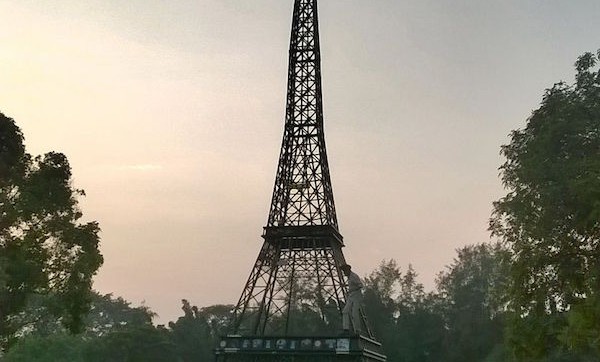
Spousal Reunification and Integration Laws in Europe
Supervisor: Livia Holden, Researcher: Rama Srinivasan, Length: 24 months (15/05/2020-14/05/2022), Grant: 183,473.28 (European Union’s Horizon 2020 - Marie Skłodowska-Curie grant agreement No. 890826)
Integration laws include a broad set of obligatory and voluntary tests for immigrants on the language and culture of the host country and they are most vigorously targeted towards visa/permit applicants who seek spousal and family unification. RE-NUP will study the implementation of integration policies in three Europeans countries through the perspective of spousal migration and assess the nature and scope of mandatory education acquired as part of residency and citizenship requirements.
The project will focus on the modes through which laws influence and are, in turn, shaped by the divergent ways in which the institution of marriage is defined and practiced in South Asia and Europe. The research will be developed through an engagement with the concept on cultural expertise, developed as part of Prof. Holden's ERC project, EURO-EXPERT.
By conducting ethnographic research among Indian and Sri Lankan Tamil diaspora in Italy, Germany, and France, RE-NUP will delineate how marital ties are forged through an interface with transnational state agencies that determine the validity of marriages while assessing visa/permit applications.
As part of the fellowship, the researcher will also undertake specialized training in the field of cultural expertise and combine research with intersectoral collaborations on intercultural education and diversity management. Through a comparison between state-mandated language/cultural education and existing resources on intercultural competence training, this project will develop an anthropological approach to intercultural training, which is currently missing in scholarly literature.
Rama Srinivasan will be also affiliated with the Marco Polo Centre for Global Europe-Asia Connections at Ca' Foscari and the Centre for History and Anthropology of Law, University of Paris in Secondment.
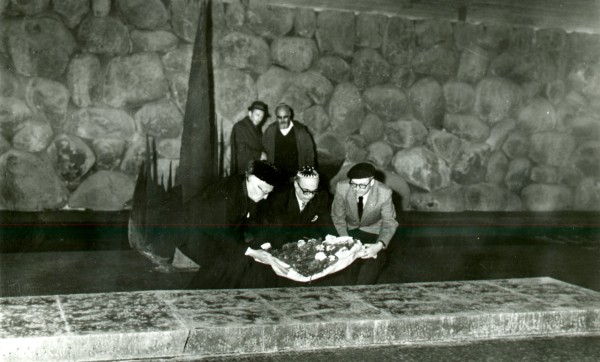
REL-NET - Entangled Interfaith Identities and Relations from the Mediterranean to the United States: The St James Association and Its Transnational Christian-Jewish Network in the Israeli-Palestinian Conflict
Supervisor: Marcella Simoni and Magda Teter, Researcher: Maria Chiara Rioli, Length: 36 months (09/2019 - 08/2022), Grant: 269,002.56 (H2020-MSCA-GF-2018)
Mixed religious identities and interfaith relations represent one of the most crucial and debated phenomena in the 21st century. The revival of the religious dimension in the world is evident in the growing religious implications in modern and contemporary wars. The REL-NET project (September 2019 – August 2022) tackles these global issues through the analysis of a significant case study that has been overlooked in the historiography: the history of Jewish–Christian transnational networks between Israel, Palestine, the Middle East, Europe and the United States after the establishment of the State of Israel in 1948. In particular, I will focus on the history of the St James Association (SJA) since the end of the 1940s. The SJA is a community formed by European Jews – some of whom Holocaust survivors – who converted to Christianity, moved to Israel and settled in the mainly Arab Jerusalem Church. Some SJA members became well-known intellectuals who developed an international network that influenced Jewish–Christian–Muslim relations during the Israeli–Palestinian conflict and on a global scale. Using multiple and interdisciplinary methodologies and an unprecedented mass of unpublished archival documentation disseminated all over the world will lead me to retrace the strands that contributed to the new relations between Jews and Christians while also engaging Muslim communities.

A Multidimensional Website Project in Response to Improve Japanese Language and IT Skills – Collaborative Creativity in Response to COVID-19
Supervisor: Marcella Mariotti, Length: 4 months (01/12/2020 - 31/03/2021), Grant: € 15,900.00 (Istituto Giapponese di Cultura in Roma - The Japan Foundation), Key words: Japanese Language, E-learning, Web Creativity
This project has been designed as a means to foster and support Japanese language students and teaching staff motivation and creativity during the Covid era.
Due to the COVID-19 pandemic, another general lockdown has been imposed on Italy this year and face-to-face teaching has been suspended nationwide, making it impossible for students of Japanese language enrolled at Ca’ Foscari University to participate in classroom activities together with their teachers and colleagues, as well as to pursue their studies abroad. Student interest and focus in their studies has been undermined not only by the mental fatigue accumulated through these emergency measures, but also by the sudden shift to remote teaching and learning. Starting from September 2020, dual teaching (in-class and online) has been introduced at Ca’ Foscari University in order to support a gradual recovery of educational practices; however, Japanese language students still had little possibility to apply for internship programs (mandatory for graduation) both in Italy and Japan, due to the decline in employment rate and border restrictions; most importantly, they faced many difficulties in finding renovated motivation to commit to the new learning methods. On the other hand, professors and teachers as well had to face a variety of technical and emotional challenges in their everyday teaching and learning. This project has been designed as a means to foster and support Japanese language students and teaching staff motivation and creativity, a response to the lack of stimuli and the time of uncertainty which are currently affecting higher education. It consisted of a a special multidimensional internship program, involving and/or addressing adjunct professors, newly graduates, graduate and undergraduate students in Japanese language curricula to further implement an online platform dedicated to Japanese language teaching and learning: JaLea and its satellite JaLea Business, combined to the first online free Japanese-Italian dictionary a4edu.
Project Director: Prof. Marcella Mariotti
Project Coordinator: Ms. Federica Tocci
Project Assistant: PhD candidate, Ayuko Kashima-Utsumi
Research Group Member and IT developer: Dr. Alessandro Mantelli
Student Tutor & Supervisor: Ms. Giulia Verzini
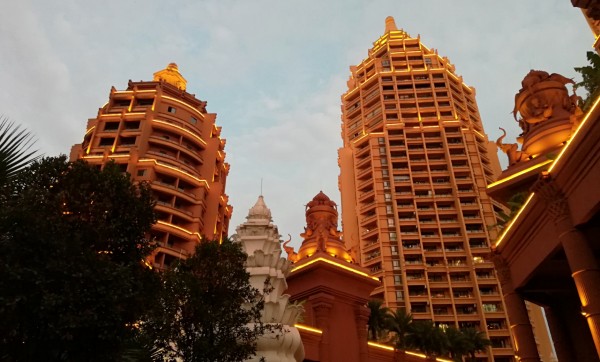
URBAN_CHINA - URBANization in CHINA’s southwestern borderlands. The case of Jinghong, Xishuangbanna
Supervisor: Laura De Giorgi, Researcher: Antonella Diana, Length: 41 months (01/08/2017 - 31/12/2020), Grant: 183,473.28 (European Union’s Horizon 2020 - Marie Skłodowska-Curie grant agreement No. 748961)
URBAN_CHINA explores urbanization in China’s non-metropolitan and non-industrial ethnic-diverse border regions under post-socialism. Post-Mao urbanization has been at the forefront of recent scholarly research on China and existing literature on the topic focuses mainly on traditional large metropolitan or industrial cities in the center with Han majority population, examining either the structural or the subjective features of urban growth. The complex and peculiar dynamics of urbanization in the new cities at the periphery remain understudied. URBAN_CHINA fills this knowledge gap, by investigating how urban spatial re-configuration driven by tourism development and a state-private capital alliance affects state-ethnic minorities power relations and inter-ethnic coexistence and relates to social change in Jinghong, a fast-growing city in China’s south-western borderlands. Using a multi-disciplinary approach that draws on methods of Anthropology, Urban Planning, Urban Geography, Urban Studies and Sociology, this pioneering project aims at producing a theoretically and empirically innovative analysis that combines a spatial, socio-economic, and political examination with an investigation of the subjective and experiential aspects of urbanization, highlighting conflicts, strategies, and mindsets in the day-to-day urban interactions between ethnic minority and Han majority citizens and the state.
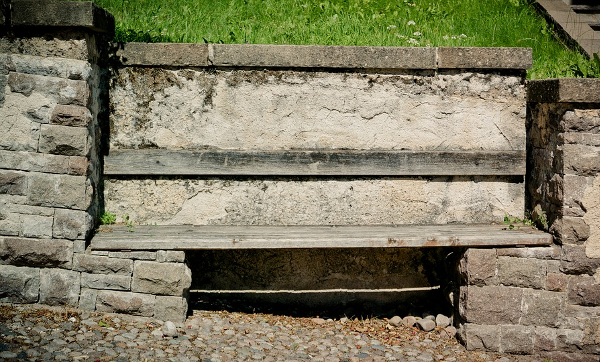
NoLBrick - No brick language learning: Social responsibility, de-standardization of language teaching/education, and the relevance of glocal e-Learning AI systems in active citizenship and peace creation
Supervisor: Marcella Mariotti, Length: 18 months (01/03/2019-31/08/2020), Grant: € 75.878,00
“What are we teaching and learning foreign languages for?” is the focal problem all language teachers are called to think about. While foreign language and intercultural education are often addressed by the CEFR, a number of criticisms have been made about its dangerous discourse of levels and descriptors , their overwhelming importance and the resulting standardization in research, teaching, public policies (in education, migration, etc.) in Europe and beyond. The “Japan Foundation Standard” or J-GAP (Japanese Global Articulation Project), can be addressed as adaptations of the CEFR to the Japanese Language teaching and Learning too. When we consider language acts as a means of expressing (and fulfilling) one’s identity, focusing, in so doing, on the learners’ micro-level, it will become clear that checking grammar errors cannot be considered the aims of teachers anymore. IT development allows language teachers to finally have the opportunity and duty to be citizens with social responsibility, educators who can ‘make a difference’, facilitating discussions and dialogues toward a critical awareness of own/others values & historical social position that bring to active citizenship. Such language pedagogy/education can only be seen as an authentic and constant process, in and outside the classroom, based on “level-free” learners’ own biographies and worldviews, carrying out a concrete de-standardization of language teaching, the professionalization of teachers, and critical education. The main research object is to proposing and demonstrating the feasibility of a level-free, social responsible language learning and teaching in and outside the classroom, that may help our world to overcome discontent and misunderstandings that too often lead to war and individuals conflicts.
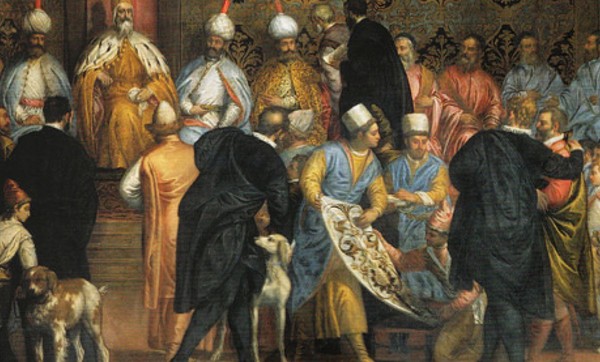
West meets East in Venice: Cross-cultural interactions and reciprocal influences between the Safavids and Venetians (SAFVEN)
Suopervisor: Simone Cristoforetti; Length: 24 months (15/01/2019 - 14/01/2021), Grant: € 180.277,20
In the last two decades, in the wake of the renewed interest in early modern diplomacy and shifting toward interdisciplinary and transcultural approaches, the interactions between Europe and the Islamic Middle East have received considerable attention. Scholars are increasingly emphasizing interconnected and shared history of Europe and the Middle East. The nature of these connections can be traced through the comprehensive examination of early modern cross-cultural encounters between the Islamic Middle East (Ottomans, Safavids) and Europe (Venetians). While the history of the diplomatic relations between the Safavid Empire and Venice has been relatively well studied, its cultural impact, especially the material dimension of diplomatic encounters has been largely neglected. Despite a "cultural turn" in the history of diplomacy and a growing interest in symbolic communication in diplomatic practices, there remains little scholarship on importance of ritual and ceremony in Safavid-Venetian diplomatic relations. No attempt has been made to study in a systematic way the cultural and political meanings of gifts, reciprocity in gift exchanges, connections between gifts and identities, institutional, ceremonial and economic aspects of material exchanges in Safavid-Venetian diplomatic encounters. The proposed research aims to explore a largely neglected subject – the significance of symbolic communication, ritual and ceremony in Safavid-Venetian diplomatic relations and a material dimension of the Safavid-Venetian diplomatic encounters, which is essential for a better understanding of cross-cultural interactions between two empires.
This project has received funding from the European Union’s Horizon 2020 research and innovation programme under the Marie Sklodowska-Curie grant agreement No. 789632
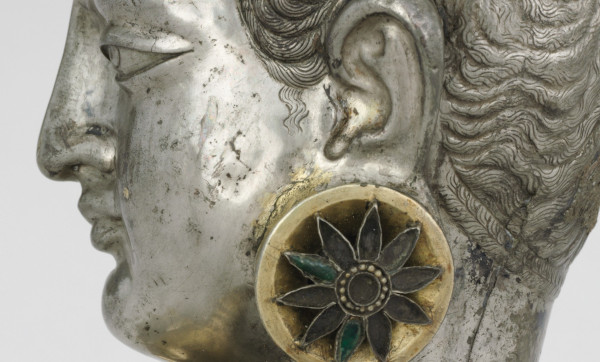
Cultural Formation and Transformation: Shahi Buddhist Art and Architecture from Afghanistan to the West Tibetan Frontier at the Dawn of the Islamic Era
Suopervisor: Deborah Klimburg-Salter; Researcher: Luca Maria Olivieri; National Research Partner: Michael Alram
The goal of the project is to define a narrative cultural history of the Shahi kingdom (7th to 10th century). Due to its extensive temporal and geographic parameters—extending from Afghanistan to the borders of Tibetan empire—the kingdom played a pivotal role in the history of Inner and South Asia. The Shahi kingdom is marked by crucial transformations—the advent of Islam, expansion of Hindu cults in Afghanistan and Pakistan, and beginnings of the Buddhist Tantric tradition. As the first study of Buddhist and Hindu religious arts within the context of the expanding Islamic culture, this project is making significant contributions to understanding the history of Islamic, Buddhist, and Hindu art. The focus on the mobility of religious objects and iconographies clarifies the convergence of aspects of different cult practices, as well as the evolution of later Mahayana ideas that accompanied the transfer of Buddhist visual culture to Tibet.
Prof. Luca M. Olivieri is participating as research partner to the project since 2018, with the ISMEO (since 2020 with Ca’ Foscari) Italian Archaeological Mission in Pakistan (ongoing excavation project of the Shahi religious and secular architecture and archaeological evidence at Barikot, Swat). The 2019 excavation campaign, and the ongoing study of the numismatic corpus from the excavated areas of Barikot (1984-2019) have been supported by the Austrian Academy of Sciences.
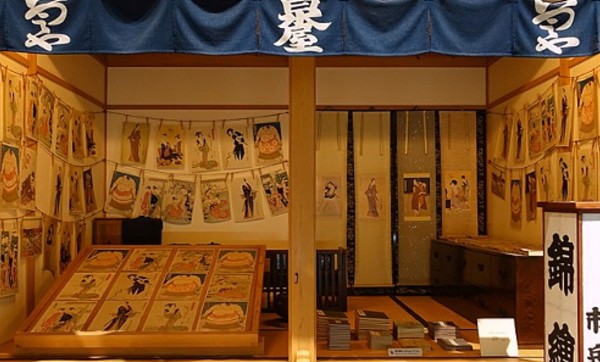
World Heritage and East Asian Literature - Sinitic Writings in Japan as Literary Heritage (WHEREAL)
Supervisor: Bonaventura Ruperti, Researcher: Edoardo Gerlini; Length: 36 months (01/06/2018-31/05/2021), Grant: € 280.683,00
In the last 20 years, world heritage and world literature have drawn much attention because they represent a convenient framework for visualising and promoting a certain numbers of selected ‘items’ acknowledged as the best achievements of human creativity, in response to a growing interest about foreign cultures. However, the concepts of world heritage—especially the recent declaration of intangible cultural heritage (ICH)—and world literature have been harshly questioned: Is it correct to delegate to an international community that is identified with the cultural elites of developed countries the power to judge and “edit the cultural diversity of the world” such as UNESCO”s list of ICH, or to arrange and create a new canon of “what is literary and what is not” such as in anthologies of world literature? These questions are tied to problems of the ownership of cultural heritage and of authorship of certain literary works that are translated from peripheral languages to hegemonic, international ones. Regarding these problems, the discourses of East Asia and Japan are interesting objects of study not only because they are both ‘peripheral’ from the traditional, Eurocentric point of view but also because their cultural and literary heritage is often older and richer than that of many European countries. This action will allow the candidate to apply an interdisciplinary approach to merge the different debates on ownership and authorship, and to formulate a new definition of ‘literary heritage’ that presents an alternative to the dichotomy of tangible/intangible. The case study will focus on the role of Sinitic writing (jp.: kanbun) in pre-modern Japan as part of the shared cultural heritage of East Asia and its historical development, reception, diffusion and eventual abandonment. This research will stimulate the dialogue on the role of literary heritage among multicultural societies with shared traditions and languages, such as East Asia and the European Union.
This project has received funding from the European Union’s Horizon 2020 research and innovation programme under the Marie Sklodowska-Curie grant agreement No. 792809
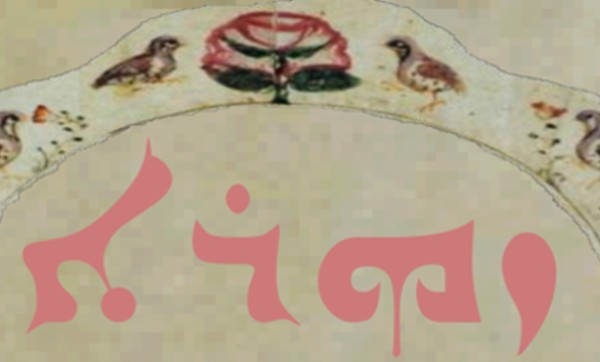
Florilegia Syriaca. The Intercultural Dissemination of Greek Christian Thought in Syriac and Arabic in the First Millennium CE (FLOS)
Principal Investigator: Emiliano Fiori, Length: 60 months (01/03/2018-28/02/2023), Grant: € 1.343.175,00
Christian communities in Mesopotamia were intellectually and religiously thriving realities until the 13th century CE. They talked and wrote in Syriac, a variety of Aramaic in which a rich but relatively little-known body of literature was written. Between the 8th and the 11th centuries, with the constitution of the Abbasid caliphate and the increasing weight of Islam in every field of cultural life, Mesopotamian Christians had to develop strategies of survival and confrontation with the changing religious and intellectual environment. On the one hand they made a selection of their own cultural heritage, especially of Greek Christian texts in Syriac translation, compiling them into large collections, the florilegia, to preserve and reconfigure the Christian thought of the previous centuries in compliance with the needs of their own time. These Greek texts had been written between the 2nd and the 6th century by the so-called “Church Fathers”, and by the 8th century they had been translated into Syriac. In the florilegia, they were excerpted and organized around themes that were central in the debates with Muslim intellectuals (e.g. the Trinity and Incarnation), but also with Jews and with other Christians. Florilegia thus served as a sort of repository where Syriac Christians learnt the abc of their theology, which they had to justify in front of other religions or Christian confessions. On the other hand, they actively engaged in conversations with their religious competitors by writing polemical works directly in Arabic, in which the influence of florilegia is clearly detectable but as yet unexplored. The florilegia have been brought down to us by a small number of precious manuscripts of the first millennium (ca. 800-1000 CE) preserved at the British Library in London. FLOS will study the Syriac Florilegia for the first time, publishing them online in digital critical editions, and will investigate how the selection of Greek Christian thought found in these collections decisively influenced the content of interconfessional and interreligious confrontations in the first centuries of Islam in the Middle East.
This project has received funding from the European Research Council (ERC) under the European Union’s Horizon 2020 research and innovation programme (grant agreement No. 758732
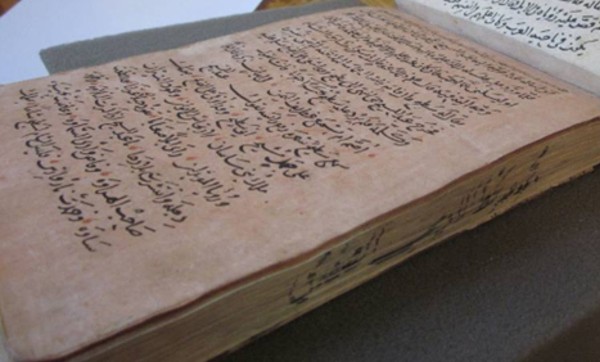
Reader, Author, Scholar in a Context of Information Overflow. How to master/manage knowledge when there is too much to know? (RASCIO)
Supervisor: Antonella Ghersetti, Researcher: Elise Franssen, Length: 24 months (15/01/2018-14/01/2020), Grant: € 180.277,20
The Mamluk period (1250-1517) is an example in terms of intellectual vivacity. Scholars and books travel easily, ideas are extensively discussed and shared, and the sum of knowledge available is always increasing. When it is no longer possible to master all the knowledge alone, and by heart, how do scholars compose new books? To answer this question, an eminent scholar of this time, al-Ṣafadī (d. 1363), will be taken as example. Several volumes of his personal reading journal—“tadhkirah”—are preserved, but have never been studied. They constitute exceptional evidence of his reading activity and reflect the very first stage of his working method. Besides, several manuscripts that were part of al-Ṣafadī’s personal library are preserved. Tracking them and the marginalia that al-Ṣafadī added next to their text sheds a complementary light on his readings. The only holograph volume of al-Ṣafadī’s tadhkirah preserved will be subject to a thorough and comprehensive study. All the authors and works cited will be identified, al-Ṣafadī’s excerpts will be confronted to the original texts. When the actual manuscript al-Ṣafadī read is identified, a careful analysis of the latter is conducted (study of paratexts left by al-Ṣafadī in the course of his work, codicological analysis). Moreover, the way al-Ṣafadī used the excerpts in his own works will be studied as well. An Open Access online edition will be prepared, including links to the original texts cited, to biographies of the authors, to al-Ṣafadī’s works using these information, and to the online database ELEO (database of paratextual elements, Liège University). Such exceptional documents will provide us an innovative picture of intellectual life during the Mamluk period, a period similar to ours in terms of overabundance of information. Therefore, the study of this original subject is perfectly timely—it will fill the gap of our knowledge of intellectual history of the Mamluk period and will nourrish our perceptions about our times.
This project has received funding from the European Union’s Horizon 2020 research and innovation programme under the Marie Sklodowska-Curie grant agreement No. 749180
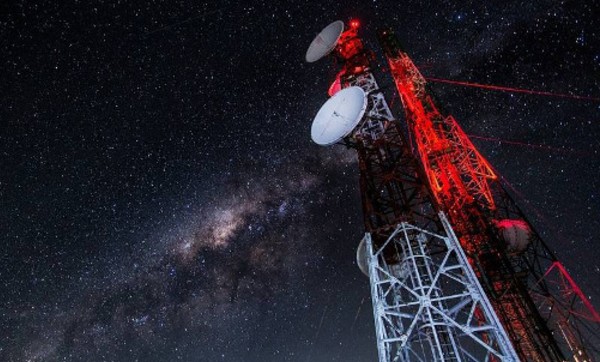
Survey and Analysis of Former Success and Current Decline of Japanese Television Programs in Western Europe: Trading Dynamics and Broadcasting Policies, 1975-2015
Supervisor: Toshio Miyake, Researcher: Marco Pellitteri, Length: 24 months (29/04/2017 - 31/03/2019), Grant: € 26.000,00 (TIFO - Toshiba International Foundation)
The project is dedicated to studying the success and decline of Japanese animé and live-action on Western European television channels, with relations to the past image of Japan in European cultures through these very series. These cultural productions arrived in Europe at the beginning of the seventies and their popularity grew until the nineties. With the beginning of the 21st century though this success slowly decreased. The research, funded for a large part by the Toshiba International Foundation, aims at understanding the broadcasting trends of Japanese series on European television and to suggest strategies to relaunch them and understand how positive the image of Japan that was built on these sources was to the European culture (and especially the youth’s).
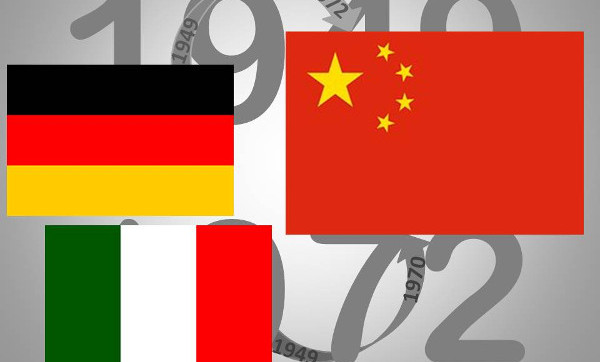
Approaches between Western Europe and the People’s Republic of China during Cold War: Italy and the Federal Republic of Germany, a comparison, 1949-1972
Principal Investigator: Samarani Guido, Length: 36 mesi (05/02/2017-04/02/2020), Grant: € 221.819,00 (Italian National funds PRIN)
The goal of the project is to investigate the interactions between Maoist China and Western Europe from the establishment of the People’s Republic of China (1949) to the early seventies when the PRC and many European States launched formal diplomatic relations, Maoist China was admitted to the UN and the rapprochement between the United States and China. In the context of the development of a non-official diplomacy supporting economic and cultural exchanges and political contacts between European States and Maoist China, Italy and Federal Germany are exemplary. The two states who lost the Second World War suffered from the antagonism between the two parts during the Cold War and in particular the requisite not to undermine their relationship with the United States. At the same time the two countries are drastically different with relations to their national context and their relations with China. While the Federal Republic of China has a small and illegal Communist Party and the relations with socialist countries (including China) must take into account the role of the Democratic German Republic, in Italy the Communist Party - and the Socialist Party up to the beginning of the sixties - had an important cultural, political and social impact on the relationships with China. At the same time Germany, contrary to Italy, could count on the legacy of strong economic - and cultural - relations with China before the war.
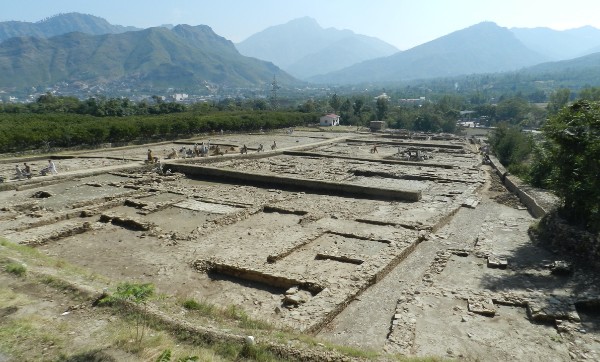
Alexander the Great and the Swat Valley: toponyms, archaeology and texts
Supervisor: Luca Maria Olivieri; Researchers: Claudia Antonetti, Luisa Prandi, Stefan Baums, Omar Coloru, Matteo De Chiara, Elisa Iori
The project starts from the results of the Italian excavations at Barikot (now ISMEO/Ca’ Foscari), and it focuses on the toponyms of the Alexander’s historians from Nysa to the Indus. To the project are contributing Matteo De Chiara - INALCO (Paris), Stefan Baums - Gandhari Project (München), Claudia Antonetti – DSU Ca’ Foscari, Luisa Prandi - Università di Verona, Omar Coloru - Università di Genova, and Elisa Iori Max Weber Kolleg (Erfurt). To the project have collaborated also Oskar von Hinüber (Universität Freiburg), Olga Tribulato (DSU, Ca’ Foscari), and Llewelyn Morgan (Oxford).
Short Bibliography
Baums, S. 2019, A survey of place-names in Gāndhārī inscriptions and a new oil lamp from Malakand, in W. Rienjang and P. Stewart (eds.) The Geography of Gandhāran Art. Proceedings of the Second International Workshop of the Gandhāra Connections Project, University of Oxford, 22nd-23rd March, 2018. Archaeopress, Oxford, 167-174.
Coloru, O., L.M. Olivieri 2020 [2019] Mount Aornos and the operations of the Macedonian army in Swat. Sources and archaeological data. Pakistan Heritage, 11, 105-122.
De Chiara, forth. Toponymy of the Swat Valley. Linguistic Archaeology. ACT-Field School Reports and Memoirs, Archival Studies, 2. Sang-e-Meel Publications, Lahore.
v. Hinüber, O., S. Baums, M. De Chiara 2020 The names of the city. In L.M. Olivieri, Ceramics from the Excavations in the Historic Settlement at Bīr-koṭ-ghwaṇḍai (Barikot), Swat, Pakistan (1984-1992), ACT-Field School Reports and Memoirs, Special Volume, 2.1. Sang-e-Meel Publications, Lahore, 53-56.
Morgan, Ll. 2017 Gradus ad Aornum
Tribulato, O., L.M. Olivieri 2018, Writing Greek in the Swat Region: a New Graffito from Barikot (Pakistan), Zeitschrift für Papyrologie und Epigraphik 204, 128-135.
Photo credits
©ISMEO, Missione Archeologica Italiana in Pakistan - MAIP


